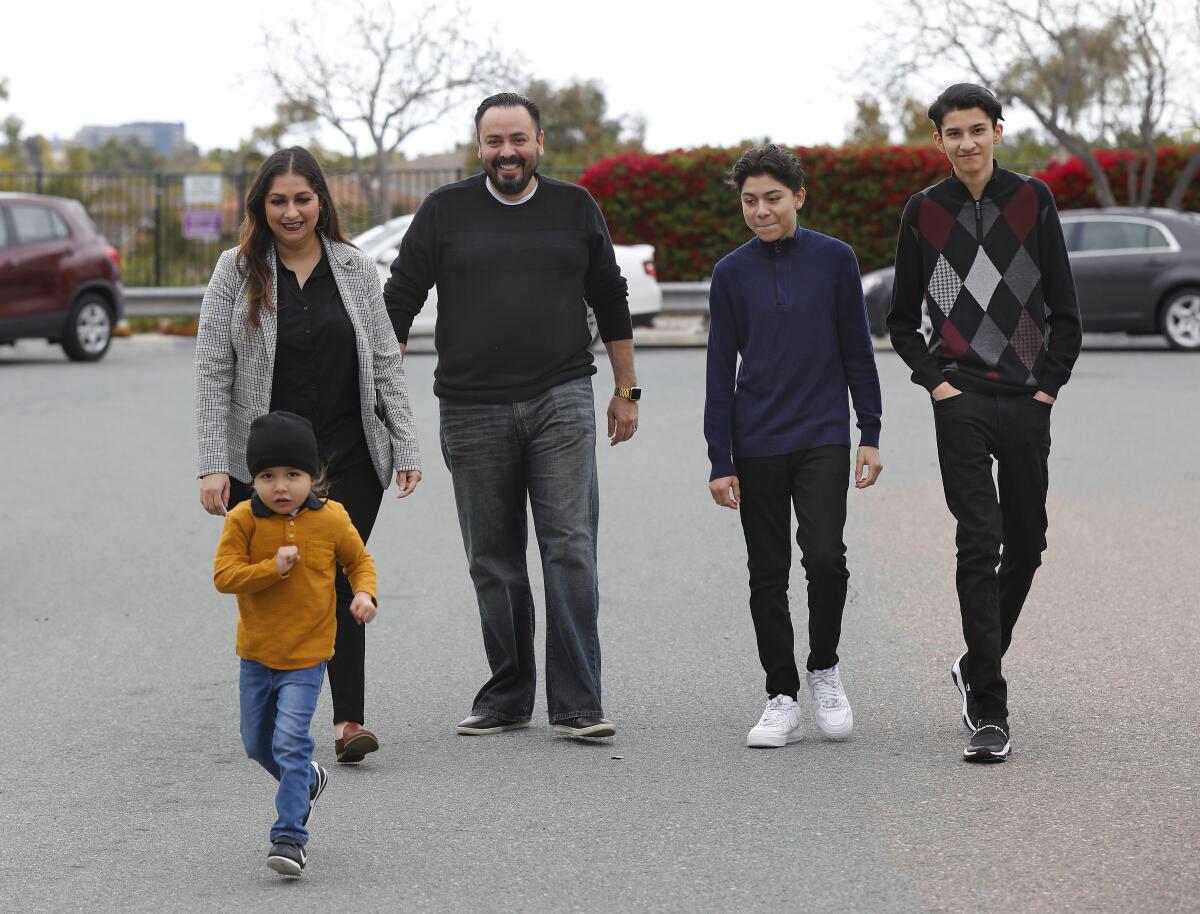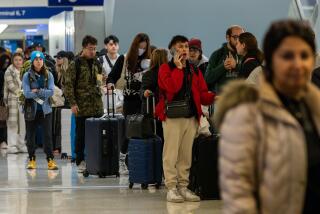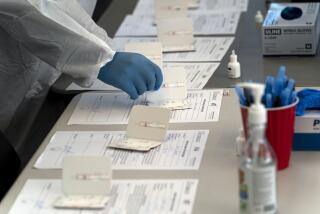In Chula Vista, an entire family battled the coronavirus

A couple and three of their children were sickened; ‘It affected everybody differently’
- Share via
CHULA VISTA, Calif. — When Chula Vista resident Erik Hoyo, 40, came down with a fever on March 25, he wrote it off as the flu. Then his wife got sick. Then three of their four children and Hoyo’s mother-in-law.
The only member of the household who did not fall ill was their 3-year-old, whom they sent to stay with relatives as soon as Hoyo’s wife got sick.
Hoyo said he didn’t know it at the time, but he was sick with the novel coronavirus; his wife, Laura, 38, had a suspected case; and doctors told them to assume the rest of their household had it too.
With persistent fever his only stand-out symptom, Hoyo considered himself the least sick member of his household until April 3, when he developed a serious new symptom that landed him in the hospital.
Hoyo said he was unable to breathe.
“Oh my God, it felt horrible,” Hoyo said during a phone interview. “It felt like I was just breathing in dust. I couldn’t catch my breath, like, when you try to take a deep breath, you can’t. It forces you to cough so you release all your oxygen. You just can’t breathe.”
Hoyo said his parents learned about his breathing problems from Hoyo’s children and called an ambulance for him on April 6. Hoyo was admitted to the hospital, where doctors did his blood work and tested him for flu and COVID-19. He was prescribed an antibiotic and discharged the same day to recover with his family in self-quarantine unless his condition worsened.
The other members of his household were assumed to have been infected with the virus, he said. No one else in his household was tested, so only his case was confirmed.
Public health officials had not determined how he contracted the virus, Hoyo said. He suspected he was infected at the auto dealership where he works as a finance manager because people had been coughing, customers with foreign passports had been coming in to buy vehicles and no other members of Hoyo’s family had been leaving home.
It started with a fever
On March 25, Hoyo started running a fever of about 101 degrees, he said. The fever persisted for days, but he did not notice any other symptoms typical of COVID-19 cases, such as a dry cough or body aches.
Hoyo said his fever was still his only noticeable symptom when his wife became symptomatic on March 27. Concerned that a contagious illness was in their home amid the COVID-19 pandemic, Hoyo and his wife decided to send their 3-year-old to stay with relatives who were symptom-free.
The couple’s other three children, ages 20, 17 and 15, became symptomatic soon after his wife, as did Hoyo’s mother-in-law, and all of them had common COVID-19 symptoms, including a dry cough, headache, fever and fatigue. None of their symptoms were exactly the same, he said.
“It affected everybody differently in my house,” he said.
He said his family seemed much sicker than he did at the time.
“My wife started getting sick a couple of days after me, but hers just hit her like a ton of bricks,” Hoyo said. “It was scary because I didn’t know what to do. We had to isolate her, but then the kids, everybody got sick. I was using most of my energy doing everything around the house.”
Laura Hoyo said she had a fever and a cough, and then she couldn’t catch her breath while walking short distances.
“I felt very weak, and honestly it was like I felt like death was upon me,” she said. “I couldn’t breathe walking just to the restroom.”
When Laura Hoyo started having serious trouble breathing March 29, Erik Hoyo said he took her to an emergency room. Doctors said she probably had COVID-19, but they expected she would recover on her own, so they did not test her or admit her to the hospital. They prescribed an inhaler and sent her home to self-quarantine.
“They checked my lungs and they were clear, so they let me go home, but they said they were going to treat it as if it were COVID,” Laura said. “They told me to self-quarantine.”
She said her doctor contacted her “every single day” to check on her until she was better.
About that same time, Erik Hoyo started noticing other symptoms typical of COVID-19, including dulled senses of smell and taste and loss of appetite. He started having trouble breathing a few days after he took his wife to the emergency room.
“It was like I would sit up to try to walk to the restroom and it was just too much,” he said.
For six days, Hoyo had no appetite and did not eat, he said. He said he lost about 15 pounds.
Hoyo said everyone in his household has now recovered, and Mateo, 3, was back home. He and Laura both said they were grateful to their friends and their children’s school for delivering meals and generally helping them when they were ill.
Hoyo urged the public to take symptoms seriously even if, like him, they wash their hands constantly and meticulously clean their work and living spaces.
“I’m the guy who wipes down their pens in the office,” he said with a laugh. “It doesn’t matter how much you clean; it’s everywhere.
“I don’t know how I got it,” he continued. “Just be careful. You don’t know how you’re going to get it. I was being 10 times more careful than I usually am.”
Cook writes for the San Diego Union-Tribune.
More to Read
Sign up for Essential California
The most important California stories and recommendations in your inbox every morning.
You may occasionally receive promotional content from the Los Angeles Times.














